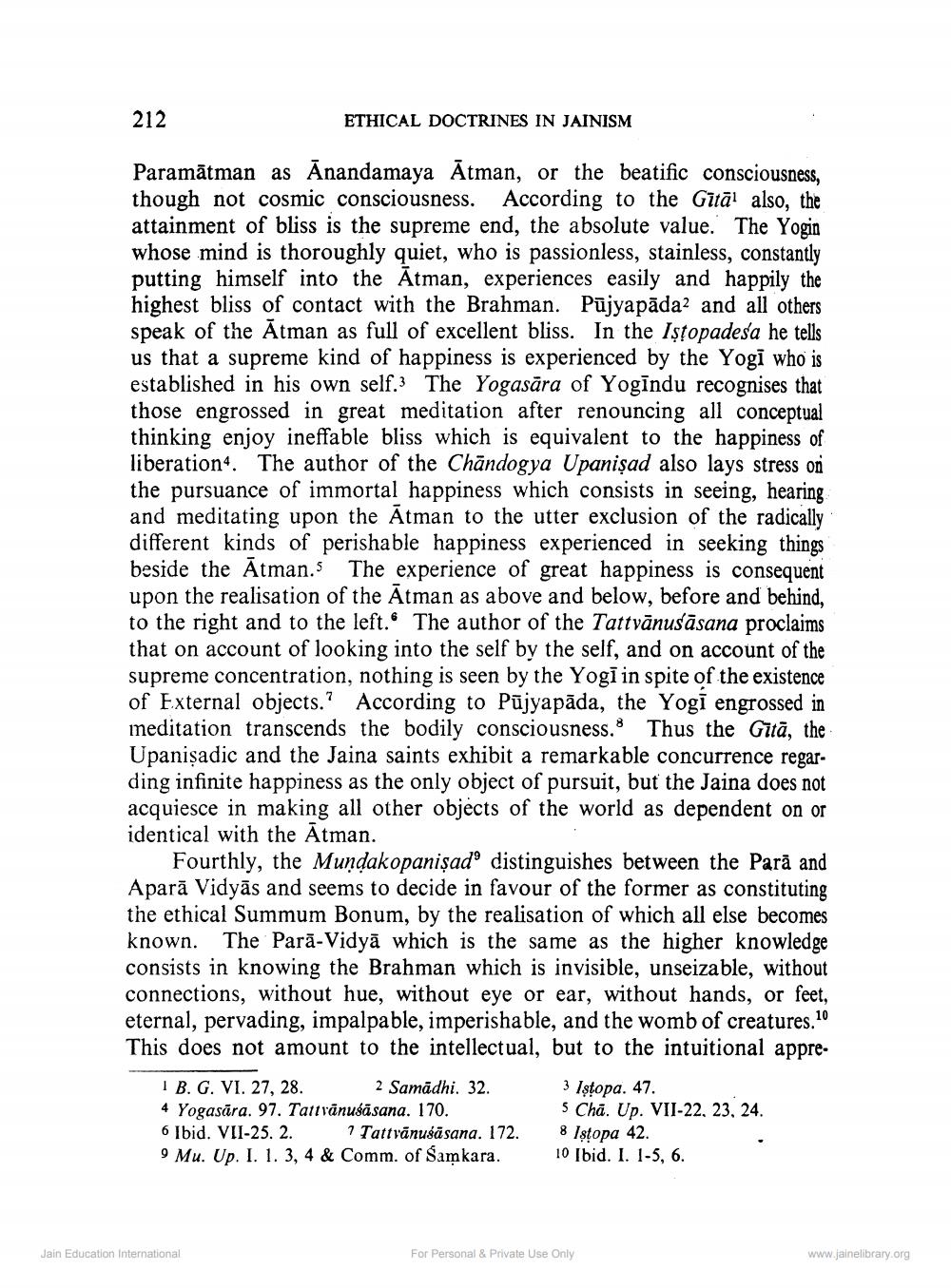________________
212
ETHICAL DOCTRINES IN JAINISM
Paramātman as Anandamaya Ātman, or the beatific consciousness, though not cosmic consciousness. According to the Gitāl also, the attainment of bliss is the supreme end, the absolute value. The Yogin whose mind is thoroughly quiet, who is passionless, stainless, constantly putting himself into the Ātman, experiences easily and happily the highest bliss of contact with the Brahman. Pūjyapāda2 and all others speak of the Ātman as full of excellent bliss. In the Istopadesa he tells us that a supreme kind of happiness is experienced by the Yogi who is established in his own self. The Yogasära of Yogīndu recognises that those engrossed in great meditation after renouncing all conceptual thinking enjoy ineffable bliss which is equivalent to the happiness of liberation. The author of the Chāndogya Upanişad also lays stress on the pursuance of immortal happiness which consists in seeing, hearing and meditating upon the Ātman to the utter exclusion of the radically different kinds of perishable happiness experienced in seeking things beside the Ātman.5 The experience of great happiness is consequent upon the realisation of the Ātman as above and below, before and behind, to the right and to the left. The author of the Tattvānusāsana proclaims that on account of looking into the self by the self, and on account of the supreme concentration, nothing is seen by the Yogi in spite of the existence of External objects.? According to Pūjyapāda, the Yogi engrossed in meditation transcends the bodily consciousness. Thus the Gitā, the Upanisadic and the Jaina saints exhibit a remarkable concurrence regarding infinite happiness as the only object of pursuit, but the Jaina does not acquiesce in making all other objects of the world as dependent on or identical with the Ātman.
Fourthly, the Mundakopanişad distinguishes between the Pară and Aparā Vidyās and seems to decide in favour of the former as constituting the ethical Summum Bonum, by the realisation of which all else becomes known. The Parā-Vidyā which is the same as the higher knowledge consists in knowing the Brahman which is invisible, unseizable, without connections, without hue, without eye or ear, without hands, or feet, eternal, pervading, impalpable, imperishable, and the womb of creatures.10 This does not amount to the intellectual, but to the intuitional appre.
I B.G. VI. 27, 28. 2 Samādhi. 32. 3 Istopa. 47. 4 Yogasāra. 97. Tattvānusāsana. 170.
5 Cha. Up. VII-22, 23, 24. 6 Ibid. VII-25. 2. Tattvānusāsana. 172. 8 stopa 42. 9 Mu. Up. I. 1.3, 4 & Comm. of Samkara. 10 Ibid. I. 1-5, 6.
Jain Education International
For Personal & Private Use Only
www.jainelibrary.org




